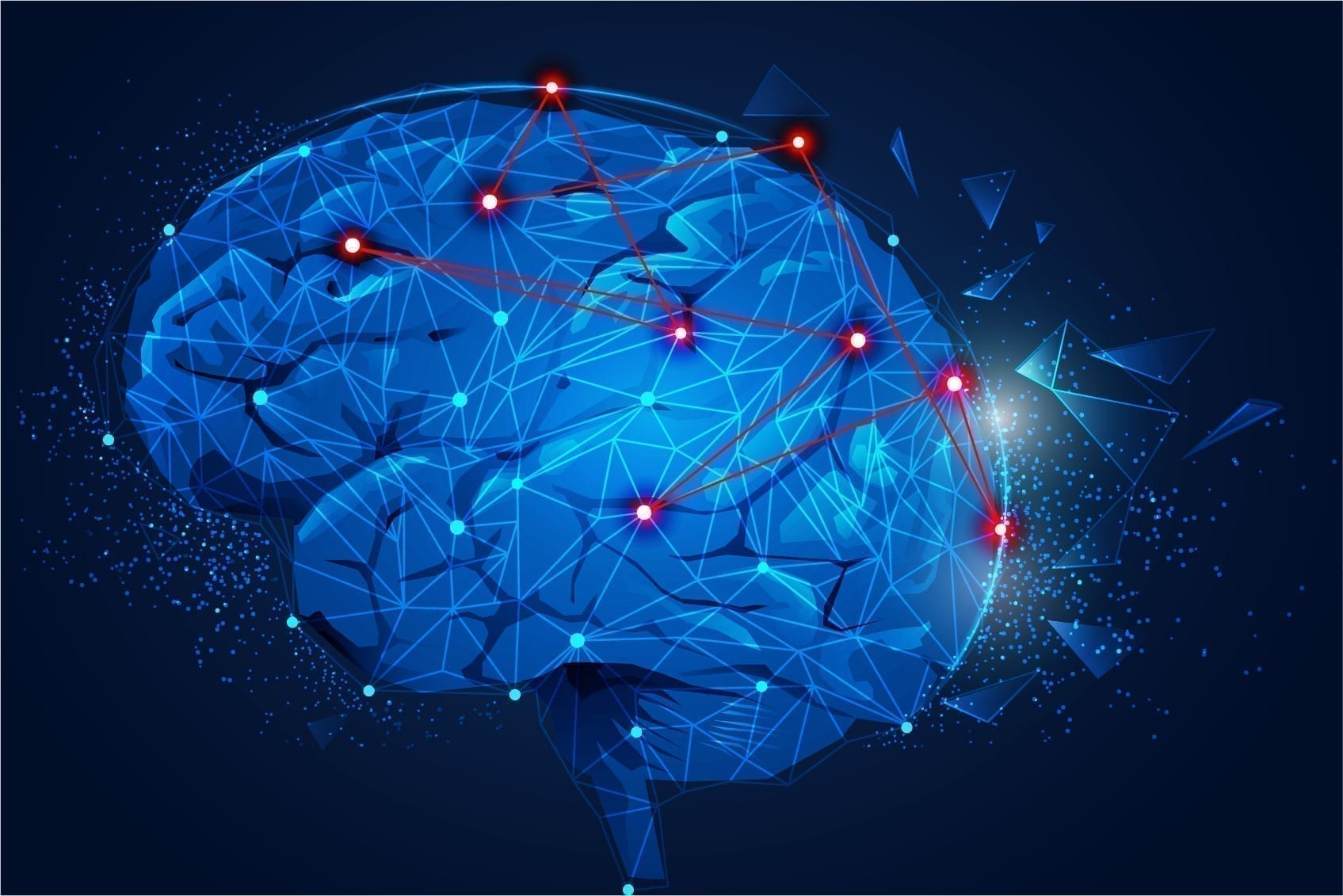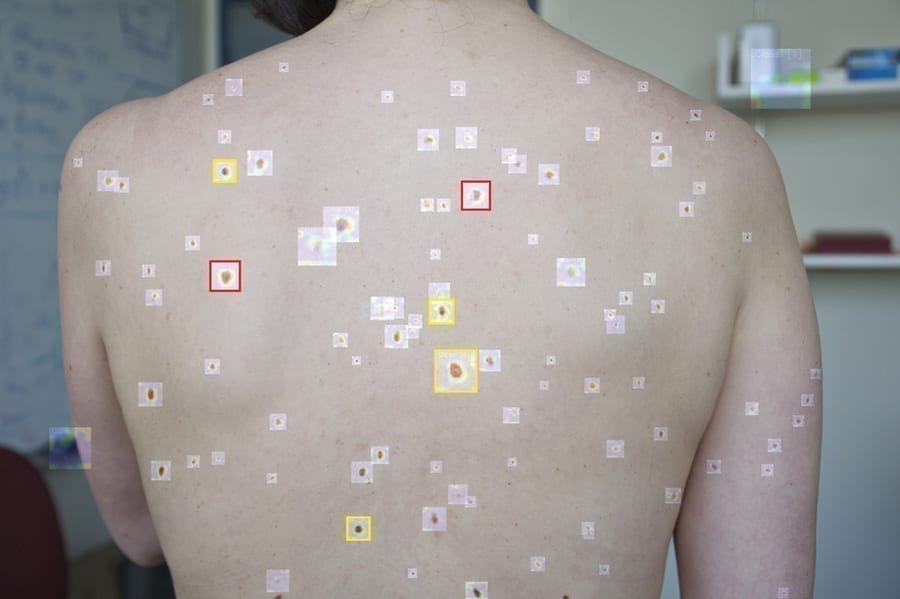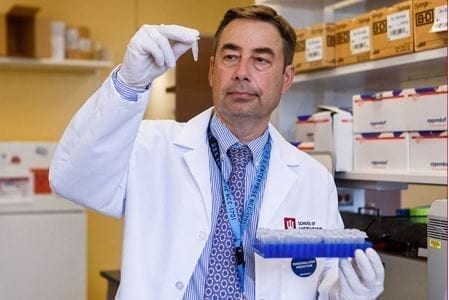
via University of Georgia
Reparative hydrogel mimics the composition and mechanics of the brain
At a cost of $38 billion a year, an estimated 5.3 million people are living with a permanent disability related to traumatic brain injury in the United States today, according to the Centers for Disease Control and Prevention. The physical, mental and financial toll of a TBI can be enormous, but new research from the University of Georgia provides promise.
In a new study, researchers at UGA’s Regenerative Biosciences Center have demonstrated the long-term benefits of a hydrogel, which they call “brain glue,” for the treatment of traumatic brain injury. The new study provides evidence that not only does the gel protect against loss of brain tissue after a severe injury, but it also might aid in functional neural repair.
Brain damage following significant TBI commonly results in extensive tissue loss and long-term disability. There currently are no clinical treatments to prevent the resulting cognitive impairments or tissue loss.
Reported on March 5 in Sciences Advances, the new finding is the first to provide visual and functional evidence of the repair of brain neural circuits involved in reach-to-grasp movement in brain glue-implanted animals following severe TBI.
“Our work provides a holistic view of what’s going on in the recovery of the damaged region while the animal is accomplishing a specific reach-and-grasp task,” said lead investigator Lohitash Karumbaiah, an associate professor in the University of Georgia’s College of Agricultural and Environmental Sciences.
Created by Karumbaiah in 2017, brain glue was designed to mimic the structure and function of the meshwork of sugars that support brain cells. The gel contains key structures that bind to basic fibroblast growth factor and brain-derived neurotrophic factor, two protective protein factors that can enhance the survival and regrowth of brain cells after severe TBI.
In a prior short-term study, Karumbaiah and his team showed that brain glue significantly protected brain tissue from severe TBI damage. In this new research, to harness the neuroprotective capacity of the original, they further engineered the delivery surface of protective factors to help accelerate the regeneration and functional activity of brain cells. After 10 weeks, the results were apparent.
“Animal subjects that were implanted with the brain glue actually showed repair of severely damaged tissue of the brain,” said Karumbaiah. “The animals also elicited a quicker recovery time compared to subjects without these materials.”
To measure the glue’s effectiveness, the team used a tissue-clearing method to make brain tissue optically transparent, which allowed them to visually capture the immediate response of cells in the reach-to-grasp circuit using a 3D imaging technique.
“Because of the tissue-clearing method, we were able to obtain a deeper view of the complex circuitry and recovery supported by brain glue,” said Karumbaiah. “Using these methods along with conventional electrophysiological recordings, we were able to validate that brain glue supported the regeneration of functional neurons in the lesion cavity.”
Karumbaiah pointed out that the RTG circuit is evolutionarily similar in rats and humans. “The modulation of this circuit in the rat could help speed up clinical translation of brain glue for humans,” he said.
With support from UGA’s Innovation Gateway, Karumbaiah has filed for a patent on the brain glue. He is also partnering with Parastoo Azadi, technical director of analytical services at the UGA Complex Carbohydrate Research Center, and GlycoMIP, a $23 million, National Science Foundation-funded Materials Innovation Platform, created to advance the field of glycomaterials through research and education.
“Doing the behavioral studies, the animal work and the molecular work sometimes takes a village,” said Karumbaiah. “This research involved a whole cross-section of RBC undergraduate and graduate students, as well as faculty members from both UGA and Duke University.”
The collaborative research effort provided five UGA RBC fellow undergraduates with an experiential learning opportunity and to publish their first paper. This is the first publication for Rameen Forghani, an aspiring M.D.-Ph.D. undergraduate working in the Karumbaiah lab.
Forghani said the undergraduate team “learned how to collaborate on this project” and about the impact of moving lab research to patients who need treatment.
“My fellow undergraduates and I were empowered to take ownership of a piece of the project and see it through from the planning stages of data analysis to writing and being published,” said Forghani. “As an aspiring, early-career physician-scientist, working on a project that has translational impact and directly addresses a very relevant clinical problem is very exciting to me.”
Charles Latchoumane, research scientist in the Karumbaiah lab and first author on the study, divides his time between UGA and Lausanne, Switzerland, where he works at NeurRestore, a research center aimed at restoring lost neurological function for people suffering from Parkinson’s disease or from neurological disorders following a head injury or stroke.
“This study has been four to five years in the making,” said Latchoumane. “Our collaborative research is so painstakingly documented that, after you read about it, you have to believe there is new hope for severe victims of brain injury.”
Original Article: ‘Brain glue’ helps repair circuitry in severe TBI
More from: University of Georgia | Duke University
The Latest Updates from Bing News & Google News
Go deeper with Bing News on:
Traumatic brain injury
- Employee working near giraffe enclosure at Michigan animal park suffers traumatic brain injury
He is in critical condition in the ICU with a TBI (Traumatic Brain Injury). We are living in a world of unknowns, and we are reaching out to you all for prayer. Pray for healing and strength for Tyler ...
- Animal adventure park employee suffers traumatic brain injury after giraffe hit ladder he was on
He is in critical condition in the ICU with a TBI (Traumatic Brain Injury). We are living in a world of unknowns, and we are reaching out to you all for prayer. Pray for healing and strength for Tyler ...
- Deer Tracks Junction employee suffers traumatic brain injury after giraffe hit ladder he was on
The 27-year-old employee is in critical condition at an area hospital with a traumatic brain injury, Deer Tracks Junction said.
- Bike crash survivor Gabriela O’Shea to host a local Love Your Brain Ride for Resilience
In her efforts to lobby for bike lanes and safety measures for cyclists and pedestrians, O’Shea did several “Share the Road” rides with like-minded people that went from the Wallkill River west to ...
- San Antonio facility wins $17 million military contract to study traumatic brain injury
A consortium at the University of Texas Health Science Center will study ways to treat military personnel and vets affected by trauma and related psychological wounds.
Go deeper with Google Headlines on:
Traumatic brain injury
[google_news title=”” keyword=”traumatic brain injury” num_posts=”5″ blurb_length=”0″ show_thumb=”left”]
Go deeper with Bing News on:
Reparative hydrogel
- The 27 Best Beauty Products Fashionista Editors Tried in April
Each month, Fashionista editors try a *lot* of beauty products. And while not every formula we test is a winner, we're constantly unearthing new favorites. Here, we've rounded up our latest hair, skin ...
- Gel – “Mirage”
Last year, Gel unleashed their forceful debut album Only Constant. Today, the New Jersey hardcore linchpins are announcing their new EP Persona and sharing the gnarly lead single “Mirage” with ...
- This Is The Safest, Expert-Approved Way To Remove Gel Nail Enhancements
However, if time is limited, you may find yourself searching through the bathroom cabinets to remove your gel enhancements at home. Below, Hackle explains the safest way to remove your gel nail ...
- Top 8 Best Glitter Gel Pens in 2024
The popularity of glitter gel pens as a writing instrument has grown, bringing a sparkle to your creations. They are ideal for students, creative artists, or just anyone with a love for ...
- Best Gel Mattress for 2024
A gel memory foam mattress can be made from swirled gel, poured gel or gel microbeads. Whichever of these gel types you choose, it'll offer the support you need while also helping cool off your ...
Go deeper with Google Headlines on:
Reparative hydrogel
[google_news title=”” keyword=”reparative hydrogel” num_posts=”5″ blurb_length=”0″ show_thumb=”left”]










